Ceiling Cracks: A Structural Warning Sign or Cosmetic?
Home » Structural »
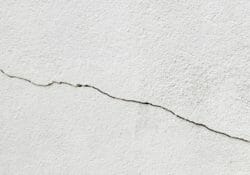
Cracks in ceilings may be cosmetic or they can be a structural “red flag”. The difference depends on the shape, size, location, and the cause of the cracks.
Often we don’t even realize there are cracks and when we do notice them, we don’t know how old they are; did they just happen, or have they been there for years? Once the cracks are noticed, then it’s a good idea to do a little investigation into them. It is not uncommon for homes to get a crack or two in their ceilings over time, therefore older homes will generally have more ceiling cracks.

New homes will often develop a few cracks in the first year or two, but most of them will be at door and window corners or at the areas where the walls meet the ceilings, rather than on the ceiling itself. One of the common reasons for this is that many homes will settle a little in the first year or two. Also, the wood framing lumber usually drys out some which causes the studs, joists, and rafters to twist or bow slightly. Major track builders know that they will get a number of calls about these cracks in the first year or two and just consider it part of the construction business.
Hairline and spiderweb type of cracks
Hairline type of spiderweb cracks due to paint issues
When repeated coats of paint are applied over other coats, then over a period of years, the chances of crazing (a pattern or network of hairline/ fine cracks) or alligatoring (a pattern similar to the reptiles scaly skin) cracking increases.
The layer(s) under the topcoat get brittle over time and expand and contract due to thermal and moisture changes differently than the more flexible topcoat. These lower coats tend to crack first and then the cracks work their way up to the topcoat, thus patterns of thin cracks develop in the topcoat of the paint.
Spiderweb or hairline type cracks due to drywall mud issues
At drywall joints where two pieces of drywall butt up to one another, drywall installers tape the joint areas. Drywall tape is used as well as drywall joint compound, often called drywall “mud”. If the drywall joint compound is put on in one or more coats that are too thick then when the mud dries, it shrinks, creating hairline spider or crazing type cracks. When too much water is added in order to thin the mud prior to application, small hairline cracks may also occur. These types of cracks are merely the result of poor workmanship.
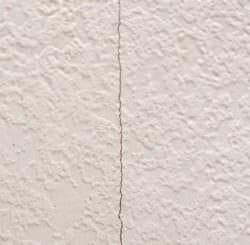
Straight cracks at taping joints
Cracks that appear at the side of drywall joint tape are usually caused by improper mud application during the installation. When the drywaller taped the joint they did not use enough mud and this can result in shrinkage cracks along the tape lines.
Usually, the crack will be very straight because it is following the straight edge of the tape at a drywall joint. This is insignificant for structural concerns and is instead evidence of poor workmanship.
Cracks on a sagging or bowed ceiling
If a ceiling is bowed, sagging, or dropped down, then the reason may relate to structural issues. Common causes include:
1. Spacing of ceiling joists or trusses
If the ceiling joists or trusses supporting the ceiling drywall are spaced too far apart, then sagging may result and the stress from this may create cracks.
2. Improperly sized ceiling joist
When the ceiling joists or trusses are undersized for the drywall ceiling weight that they are carrying, then sagging may result and the stress from this may create cracks.
3. Damaged ceiling joists or trusses
Occasionally, a ceiling joist or a truss becomes damaged or cracked, this weakens the framing member and the ceiling will bow or sag in one or more areas. Thus, stress is placed on the drywall and cracks develop.
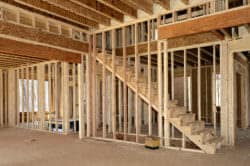
Cracks caused from a load-bearing wall being removed and not having proper supports installed
Bowed ceiling cracks may also be caused by a load-bearing wall being removed without the proper structural support being added. At times the ceiling may not be bowed, but one section has dropped down. This movement can result in cracks. Read more on load-bearing walls.
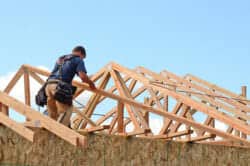
Cracks caused by truss uplift
Cracks that appear where a ceiling intersects a wall may be due to “truss uplift”. Roof trusses tend to move a little when there is a seasonal change of temperature or humidity. These fluctuations and changes may result in the trusses moving or shifting a little. This is common and most homes are engineered to handle movement due to truss uplift.
Truss uplift cracks are normally noted on interior walls, not exterior walls. The cracks will typically appear on walls that are perpendicular to the direction that the trusses run. Generally, these cracks are not considered to be a structural concern and may even open up and close somewhat depending on the season. Read More On Truss Uplift.
A higher level of concern with ceiling cracks occurs when:
A crack is continuous through the wall and ceiling
Cracks that run across the ceiling to the wall and then down on the wall, basically a continuous crack going through the ceiling and the wall, may be a concern. This type of crack suggests that there may be a structural issue i.e. a foundation or framing issue.
Ceiling cracks running diagonally across the ceiling
A crack (of a 16th of an inch or larger) that runs at a diagonal angle through a sheet(s) of drywall requires a lot of force to create this crack. It’s like the drywall is ripped apart. This type of crack generally would be considered a “red flag”, depending on width, length, and location.
Wide cracks and areas that have a number of cracks
Ceilings that have multiple cracks that are more than just a small hairline crack are a concern. Cracks that are 1/8 or 1/4 of an inch wide or more would easily fall into this category. A crack that is 1/8 inch wide and only two feet long in a corner will not be given as much weight as a ceiling with 1/4 inch wide cracks, three or five feet long and that appear in a number of locations.
Ceiling cracks become more of a “red flag” if there are other signs that the house may have movement or structural problems
When ceiling cracks become a concern you should look for other factors that indicate possible structural issues to determine the severity and importance of the ceiling cracks.
Signs of possible structural issues include:
- Cracked foundation or slab (Read more)
- Sloping or sagging floors
- Doors and windows that stick or won’t open
- Sagging roof
Cracks may also be caused by:
- Small earthquake tremors
- Settling of the home
- Soil movement from slope creep or landslides
- Sinkhole issues
Bottom Line
Ceiling cracks are common and usually not a major concern. The older the home, the more likely for cracks to appear. Most contractors and homeowners will view cracks as a maintenance or cosmetic issue. Occasionally ceiling cracks can be a “yellow” or “red” flag that there is a serious or structural issue, therefore it is good to be able to recognize warning signs that a problem may exist.
If you are unsure if there is a problem or if a ceiling crack is serious, a home owner or buyer may wish to consult with an appropriately qualified professional. This may be a framing, drywall, or general contractor. A structural engineer likewise may be helpful in providing meaningful information.

- You may only need preventive maintenance
- If very minor, then you may just need to monitor it for changes
- If repair is needed, it is much cheaper to correct it in the early stages than after it has become a big problem
- Should it be major, then you may need to consult a qualified professional
Take a minute and review our page with other common structural issues in homes
Articles and Resources On Common Structural Issues In Homes





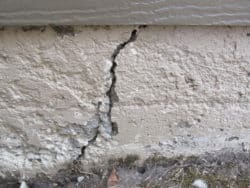
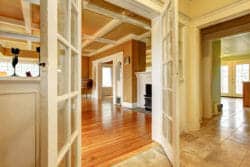

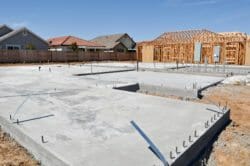



We have a crack running up the wall along the ceiling and down the other wall where there used to be a wall and is no longer there this was done 2Years ago we also have had a complete new roof done joists and all Is this just settlement or could it be subsidence
can an add on material like painting putty can be consider as part of the structural of the building?
Ceiling cracks can be more than just a cosmetic issue; they often indicate underlying structural concerns. While small, hairline cracks may be harmless, larger or expanding cracks could signal structural movement, water damage, or foundation issues. It’s crucial to assess and address them promptly to prevent potential safety hazards and costly repairs down the road.